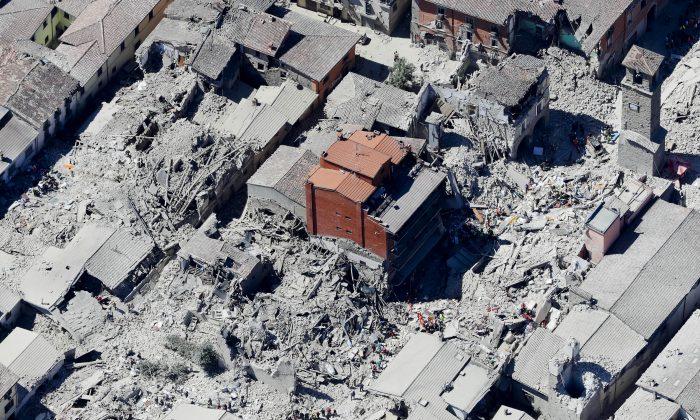LOS ANGELES—A devastating earthquake in Italy on Wednesday that killed at least 250 people was a lot weaker than one in Myanmar that may have only killed four, but it did far more damage because it happened at a shallower depth.
An earthquake’s destructive force depends not only on its strength, but also on its location, distance from the epicenter, and depth.
Quakes can strike near the surface or deep within the Earth. Most quakes occur at shallow depths, according to the U.S. Geological Survey (USGS).
Shallow Earthquakes

Italy’s quake was very shallow, originating between 2 1/2 miles (4 kilometers) and 6 miles (10 kilometers) underground, according to Italy’s geological service and the USGS. The magnitude measurements also varied slightly — between magnitude 6 and 6.2.
Shallow quakes generally tend to be more damaging than deeper quakes. Seismic waves from deep quakes have to travel farther to the surface, losing energy along the way.
Shaking is more intense from quakes that hit close to the surface. It’s like setting off “a bomb directly under a city,” said Susan Hough, a USGS seismologist.
The Italy quake devastated three towns, home to medieval structures that were built before building codes existed. Many structures were made of brick or stone, which can easily fall apart during shaking.
“They’re very quaint, but they don’t withstand earthquakes very well,” Hough said.
Deep Earthquakes

By contrast, the 6.8 quake in Myanmar was much deeper — at 52 miles (84 kilometers).
Quakes deeper than 43 miles (70 km) are called “deep-focus earthquakes,” and they originate below the Earth’s crust, according to the USGS. Earthquakes can occur up to a depth of about 435 miles (700 kilometers).
While deep quakes may be less damaging, they’re usually more widely felt.
Most of the destruction in the Myanmar quake was centered in the tourist town of Bagan where at least 171 pagodas and temples dating back centuries were damaged.
There were no reports of significant damage in Yagon, the country’s major city, where residents are accustomed to experiencing smaller quakes.






Friends Read Free